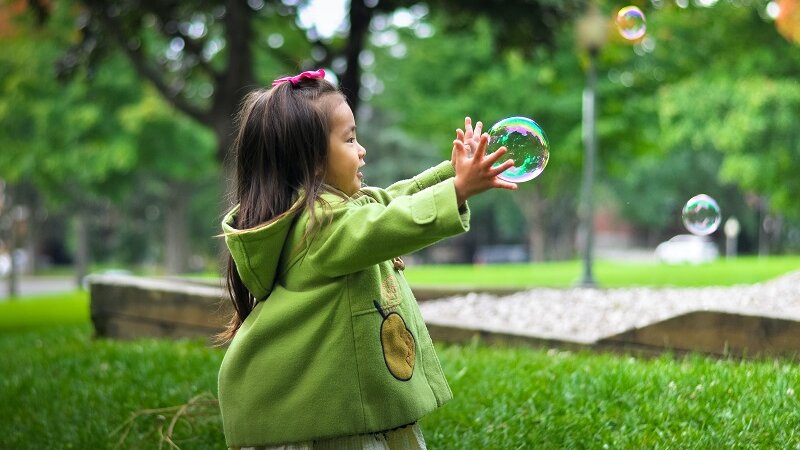Who Is Your Inner Child
Episode #2 of the course Reparenting yourself by Sonia Chauhan
Renowned psychoanalyst Carl Jung introduced the concept of the Inner Child as the “child archetype” in the 1960s. Through the decades, various psychologists have acknowledged the inner child as a crucial part of our character.
The inner child is an unconscious child-like aspect of every adult personality, crystallized by your deepest experiences through early years. It’s a spontaneous, creative side of you that contains your innermost emotions and urges. Your inner child is your psychological reality.
Our inner child is a part of us but we may not be aware of it. It is usually a manifestation of repressed emotions that we weren’t allowed to express: guilt, shame, or terror; or unmet needs that couldn’t be fulfilled: safety, stability, hugs.
How the Inner Child Works?
The motivation to move on and grow towards healthy patterns is natural and should be innate. But often, we find ourselves stuck with unhealthy habits that we just can’t change, no matter how desperately we try. The result is that we’re constantly disappointed over habits that actually don’t help us, but we feel comfortable exhibiting them so we end up going in circles.
Why?
Because we approach life from the perspective of the “powerless inner child”. A child has no experience or understanding of an adult’s life which is complex, multi-faceted, or even boring. The child navigates the world through their feelings.
Children often self-assign meanings to situations that have nothing to do with them. So, a child who cannot fathom why her mother is particularly grumpy when she gets home from work is likely to perceive that Mum’s grumpiness must be because of her, thus developing the incorrect belief that she is unlovable. Similarly, a bullied younger sister might conclude she is “a hateful little girl” because she can’t understand that her brother is horribly jealous of her.
At our core, we still perceive our lives, including career, relationships, and private lives, through the lens of our inner child, i.e. the belief system we developed during childhood. Psychologists agree that the inner child is active through the ages of six to nine years but this could go up to twelve years.
Through self-parenting, we try to access the emotions of our wounded inner child, understand its unmet needs, and heal ourselves through strategies based on the principles of self-love and care. This is essentially called “Inner Child Work”.
How to Identify Your Inner Child
Part #1: Examine Triggers
Dr. Nicole LePera (aka “The Holistic Psychologist”) offers a brilliant strategy to identify the inner child. She asks us to look for trigger points. These are everyday incidents that evoke a disproportionately large emotional reaction in you. Incidents that you look back at and wonder how you can lose your mind over such a small issue.
Let’s take my example. Usually, I’m a very calm person but I get major anxiety around money issues. So, if I notice that K (my husband) is stoic-faced or just quiet after we’ve had a discussion over finances, my mind hyperventilates.
Here’s a snippet of my self-talk: “It must be me. I know I’ve done something wrong. Is it because I asked him for money? Why is it always about money? What if he’s judging me? Do I spend too much? Let me track my expense-sheet. Sigh. Maybe he doesn’t like me anymore. He’s just putting up with me.”
But why do I do this? Here, I want you to think of your inner child as an emotional trauma stuck in time. It is the part of you that wants to stay protected, unhurt, and in control. Triggers are a great indicator because they tell you that deep down, your reaction is meant for a bigger issue.
Part #2: Stressful Events
Your inner child will always manifest itself whenever you are in a stressful situation, like a job interview, public speaking, or being vulnerable with your partner. Your reaction to a stressful situation is a solid cue to look deeper into your discomfort.
I prepare for everything in life. My peripheral vision is very strong. I drive carefully, and I avoid adventure sports at all costs. So, my inner child is scared and resists unpredictable events.
Inner Child Work Exercise
Connect with your inner child.
Tap into your inner child by being childlike. Set some time every day to play a leisure sport, go bicycling, throw around a ball, build blocks, do a jigsaw, or coloring. This will open the door to your child-like self, and that can lead to other memories as a child, and more importantly, your childhood personality.
After the fun activity, journal your emotions. How did you feel during the playtime? Did you think of any incident or memory?
Take the inner child quiz here.
Now that you have an idea about the Inner Child, tomorrow, we will learn about the Inner Parent.
Recommended book
Homecoming: Reclaiming and Championing Your Inner Child by John Bradshaw
Share with friends

